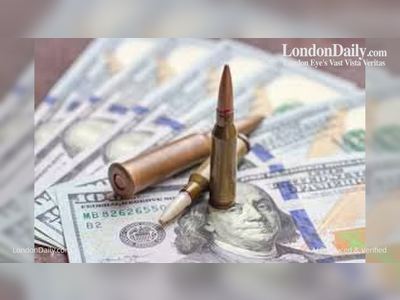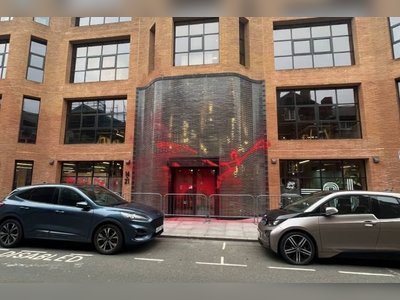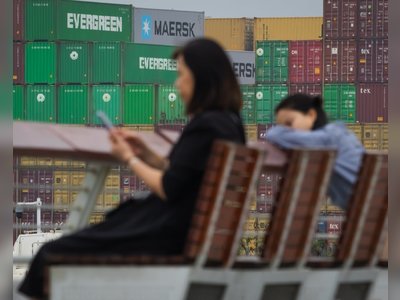
Letter: The importance of Emancipation Day
In the mid-1970s, the then political directorate in their attempt to rewrite Caymanian history removed the cultural celebration of Emancipation Day (1 Aug.) from the cultural calendar. Before that time, Emancipation Day in the Cayman Islands was a popular and much celebrated holiday on Grand Cayman with both black people and enlightened whites marking the occasion with dance, camaraderie and revelry.
In Bodden Town, which was both the political as well as the slave capital, the celebration took on a special significance with black folk from all walks of life congregating in jovial mood.
As a youth with ancestral ties dating back to the slave era, I grasped the significance of what black folk sought to preserve in this celebration.
Bodden Towners of my generation and older will recall that Dick Frederick had a standing contract with the authorities for the use of the Bodden Town Town Hall on 1 Aug. The celebration culminated in a dance which really was more like a ball. At this soiree, men and women of colour from all over the island came together to celebrate. The occasion was formal and the quadrille was among the dances performed.
I recall Dick Frederick speaking of another dance which he called the ‘Sir Roger’. As best as I can ascertain, this was some sort of European waltz and, like the quadrille, it was probably the black people’s interpretation of a European dance emanating out of the slave era.
From an early age, I cultivated an interest in and respect for what black Caymanian folk did and, of equal importance, how they felt about the society in which they lived. This was enhanced by the groundings from my mother, whose sense of Pan-African history and culture led me to fathom the duality which is Caymanian society. I later realised that men like Dick Frederick were described by black historians as ‘Royal Africans’.
From the era of the slave ships and beyond, these men and women were entrusted with shepherding, guarding and disseminating the heritage, culture and history of the oppressed and enslaved. It is a fact of some historical importance that the white slave catchers, owners and contractors knew of the existence of such persons and tried their best to prevent them from boarding the slave ships or from working on the plantations.
The cultural history of Bodden town is enriched by the numbers of such persons who played important roles in the preservation of what is increasingly appreciated as our Caymanian heritage.
As always, I am fascinated by what I described in ‘The Cayman Islands in Transition’ as the ‘duality‘ which is Caymanian society. I am intrigued by the number of ‘established Caymanians’ who when questioned as to their ancestry cite Scottish, Irish, Welsh and English (WASP) roots with not so much as a mention of an African connection. Of course we are not African, neither for that matter are we any of the other mentioned ethnicities.
Slavery was an institution predicated upon violence, including sexual violence and force. No society in which slavery existed was exempt from such practices. Taken to its logical conclusion, this suggests that there existed little to no racial purity in slave societies or, in our case, a society with slaves.
Furthermore, European blue bloods abhorred living in the culturally impaired, mosquito-infested colonies. Hence, they sent their attorneys, managers and bookkeepers to attend to their colonial affairs. These persons settled in the colonies and cultivated liaisons with black men and black women. The product of such liaisons are elaborately scaled by Kamau Brathwaite in his seminal work ‘The Development of Creole Society in Jamaica 1770‑1820’.
The Portuguese coined the word for persons of European descent born in the colonies. This word was ‘criollo’, anglicised today as ‘creole’. Today, the term applies equally to all persons (black and white) of established ancestry born in the colonies. Hence my reason for claiming that there is no racial purity among established Caymanians.
Having laid that important foundation, let me now return to what I consider the revisionist attempt to deny history. The records show that slavery existed on Grand Cayman. The record also shows that racism existed (and by my account) still exists in Caymanian society.
If we are honest with ourselves, we should try to exorcise these old ghosts before the situation becomes chronic. Those who continue in the present vein, leave themselves open to that most frightening of situations as mentioned by the philosopher George Santayana – “Those who do not learn from history are doomed to repeat it.”
I live with the hope that the Emancipation Day Holiday (1 Aug.) will one day return to the Caymanian cultural ca lendar and that Long Celia will take her rightful place among the pantheon of National Heroes of these islands.
J.A. Roy Bodden
6 facts you probably didn't know about Emancipation in the Caribbean
Emancipation Day is seen as one of the most significant commemorations in Caribbean history. It's a celebration of freedom and liberation from a system of oppression and servitude.
While we know the significance of the day, there are a few items you may not know about the period leading up Emancipation.
Here are six things you probably didn't know about Emancipation in the British Caribbean.
1. The Caribbean achieved emancipation before the United States did
The 19th century saw the gradual evolution of emancipation sweep across the islands of the Caribbean well before the United States.
Britain was one of the catalysts in this process by first abolishing the slave trade in 1808, followed by apprenticeship and finally, emancipation in 1838.
Slaves in the United States were emancipated in 1865.
2. Slaves were emancipated but not free
Emancipation Day was officially declared on August 1, 1834, and was celebrated throughout the British Caribbean.
However, the newly 'freed' slaves were forced into a period of apprenticeship. Apprenticeship was touted as being a period to transition slaves into freedom while they earned a small stipend, however, there were little changes in treatment and working conditions under apprenticeship.
They were still expected to remain on the plantations and put in more than 10-hour days; absenteeism would result in imprisonment and the apprentices could still legally be flogged including females.
The scheme came to an end four years later after the Anti-Slavery Society petitioned and fought for its end. Parliament voted for complete emancipation (freedom without apprenticeship) to take effect from August 1, 1838.
3. Trinidad and Tobago is the first country in the world to declare Emancipation Day a national holiday
Emancipation Day was first declared as a national holiday on August 1, 1985, in Trinidad and Tobago, replacing Columbus Discovery Day which marked Christopher Columbus' arrival in Trinidad on July 31, 1498.
Trinidad and Tobago became the first country in the world to declare the day as a national public holiday.
4. There were two groups of freed slaves that existed before Emancipation
There were two ex-military groups who lived in freedom before Emancipation was officially declared.
One group was the Merikins. They were former slaves of the American south who fought with the British army in 1812 against the former colonies. For their service, they were rewarded with their freedom and land in the Princes Town and Moruga area.
The other group were Muslim soldiers born in Africa that served in the West India Regiment between 1793 and 1815. They were also granted their freedom and land in Cumuto, Valencia and Manzanilla.
5. Some slaves saw their freedom as early as 1834
Most slaves were officially freed in 1838 following the apprenticeship period. The Abolition Act immediately freed few slaves except for in the cases of Antigua and Bermuda where the colonial governments rejected apprenticeship and fully emancipated slaves in 1834.
6. There were a number of ex-slaves that freed slaves
In addition to the Merikins and African-born Muslim soldiers, there was another group--the Mandingo--that was also free. They owned land, homes, grew their own crops and saved their money to purchase the freedom of their countrymen.
Jonas Mohammed Bath was one key figure in this movement. Today, Bath Street off Picadilly Street is named after him.











